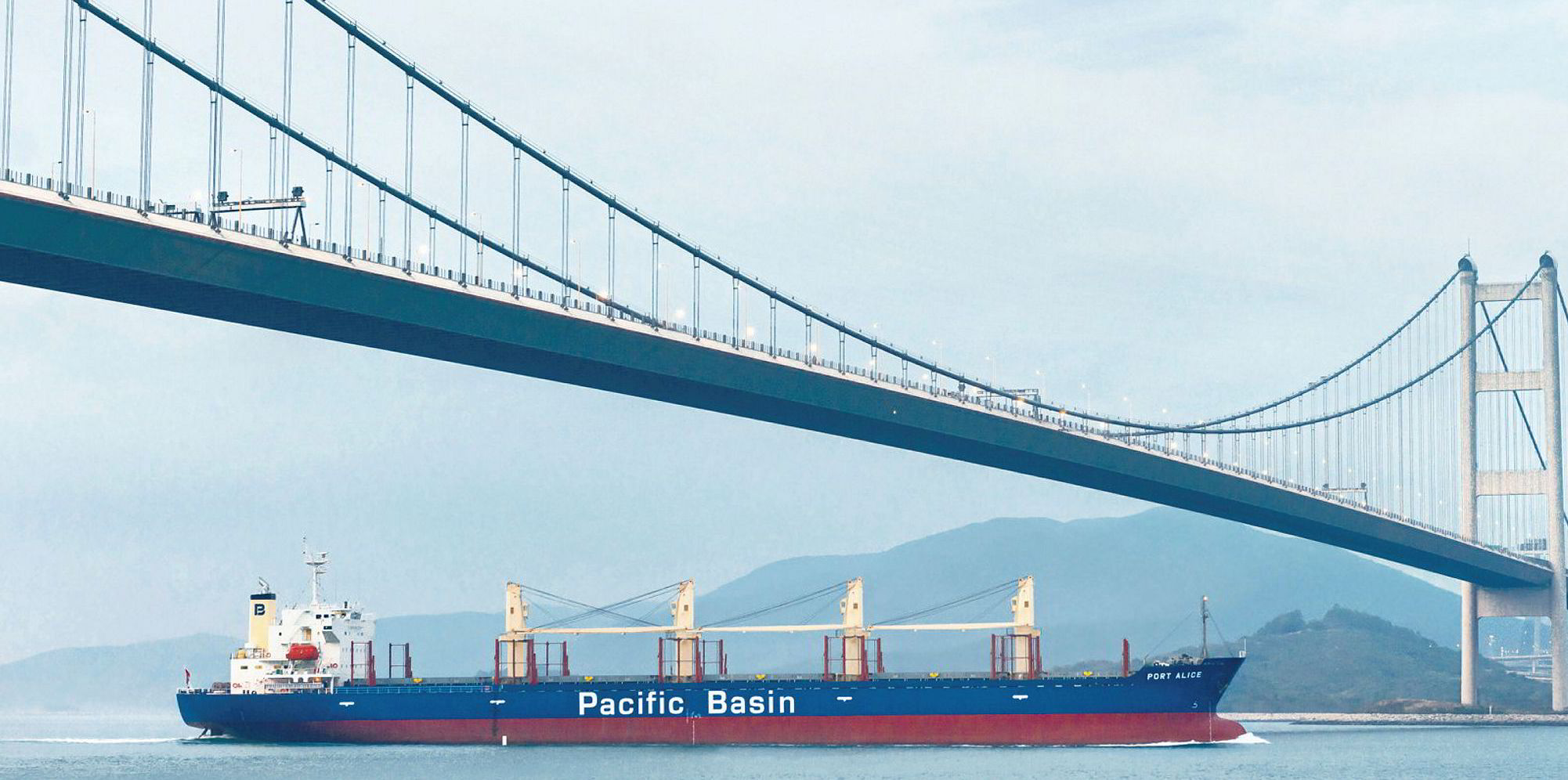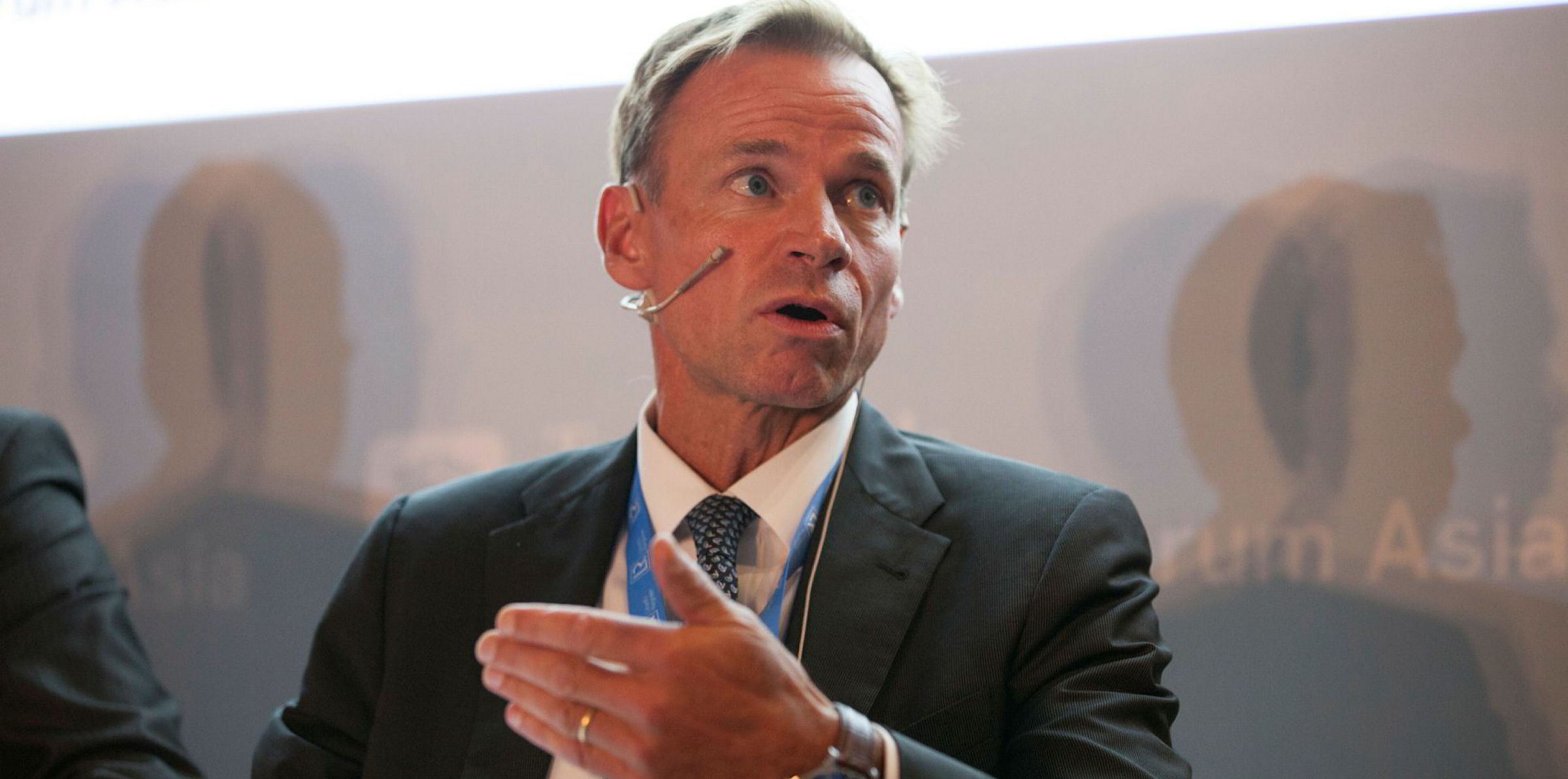Pacific Basin Shipping retains an appetite for growth despite trade tensions helping take the air out of the dry bulk balloon during the past few months, its chief executive has said.
With $342m in cash and eight debt-free ships, the Hong Kong-listed company has plenty of firepower to extend a growth spurt that has taken its owned fleet from 34 ships in 2012 to 112 today.
Mats Berglund, chief executive of Pacific Basin, told TradeWinds that the company remains optimistic for the medium and long term despite the drop off in rates this year.
“We think the fundamental situation will win over the near-term nervousness,” he said in an interview at the outfit’s London office after the company reported its annual result.
“We will continue to buy — secondhand ships only,” he said. “The reason has to do with basic economics where we still see a lot of value in secondhand tonnage.”
The gap between five-year-old and newbuilding prices in both the handysize and supramax segments has remained wide for the past five years.
Technology complications

At the same time, Berglund said uncertainty over the future technology, given increasing environmental demands from regulators, further complicates any orders.
“If you go to a shipyard today and order their very latest design, you order an engine that is built to burn 3.5% heavy fuel oil," he said. "That is not going to be the fuel of the future."
"We think there must be new technology coming — the sooner the better.”
While both handysize and supramax ships remain on Pacific Basin's shopping list, the company prefers the larger vessels given the present structure of its fleet.
The outfit owns over 80 of the 130-plus vessels in its operational handysize fleet, but it owns under 30 of the more than 80 ships under its control in the supramax space.
“Expect us to grow supras more than handies,” Berglund said.
Pushing a profit
Pacific Basin last week reported a profit of $72.3m for 2018, a figure recorded in a dry cargo market that was better but still not historically strong.
Rates have fallen away in the first few weeks of 2019, with handysize and supramax ships well below the levels seen in the comparable periods of 2017 and 2018.
Berglund said tariffs on US soybeans, which cut shipments, contributed to the “air coming out of the balloon earlier this year” before the start of a rebound in the past couple of weeks.
The executive said it is too early to say if 2019 will end up being weaker than 2018 overall.
“We do expect more volatility this year,” he said. “If we get into a period where there is a trade resolution and we get the remaining US soybeans that should have moved in the fourth quarter [of 2018] coming out in the second quarter [of 2019] at the same time as the South American beans come out, you could have a pretty good push up again.”
Further help could come from a fresh Chinese stimulus later this year.
“Their economy is slowing down but they don’t go down easy," he said. "They have a lot of tools to work with, including loosening their debt regulations, and we expect to get a little bit of help from the Chinese stimulus.
"We also think we will start to get a little bit of an effect from the IMO 2020 regulations coming in.”
</p>






